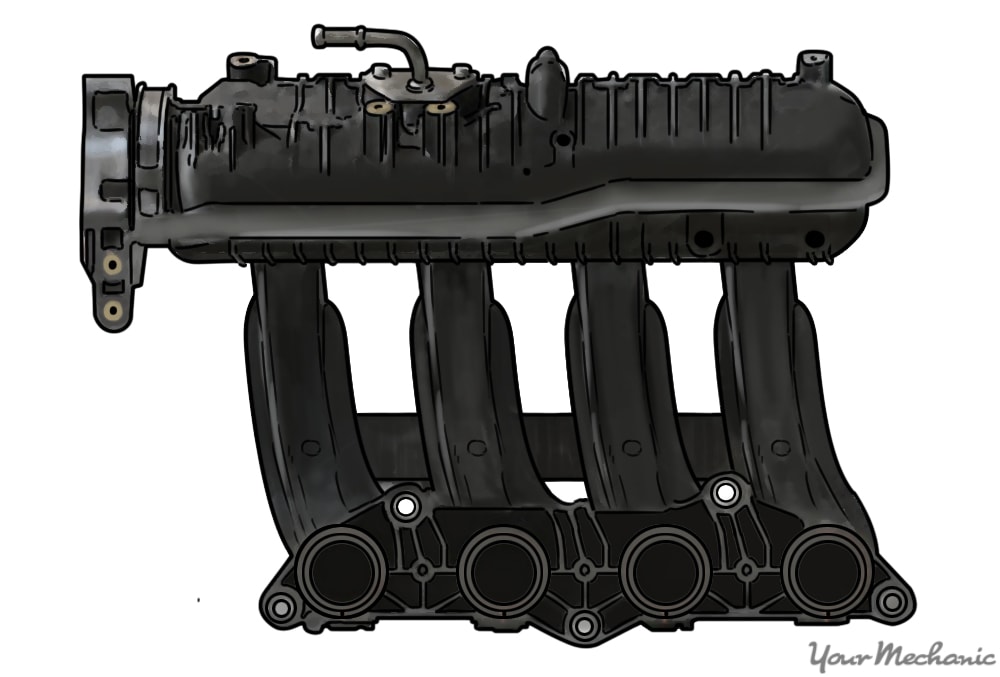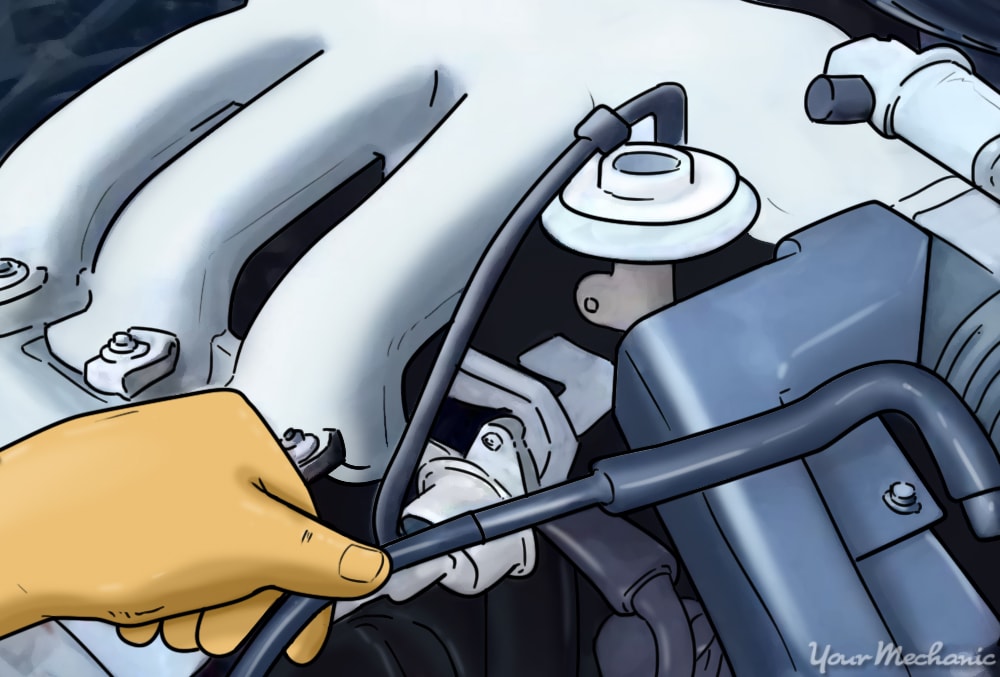

For decades, engineers have known how to increase engine performance at certain engine speeds by tuning the length of the intake manifold runners. It’s cheap power, but comes with a catch. You have to choose what engine speeds you want to develop peak power. The tuned intake only benefits the engine in a narrow RPM range, and, in some cases, actually robs power in others. This works well enough for race cars, but not as much for a street car that has to perform at a wide range of engine speeds.
Some modern computer controlled engines have been equipped with variable length intake manifolds. This is achieved by having two or more sets of runners for the air to be drawn through and using a butterfly valve or a slide valve to switch back and forth between them in varying amounts. In this way, the engineers have been able to overcome the fixed intake property of performing only in a narrow RPM band.
This system requires some kind of motor - sometimes vacuum operated, sometimes electric to do the switching - and like all motors it sometimes fails. When it does fail, you may notice reduced engine performance or you might simply see a check engine light and not notice any other symptoms at all. Either way, replacing it is important, and, in many cases, it’s a job that can be performed by a home mechanic.
Part 1 of 2: Replacing the intake manifold runner control
Materials Needed
- Combination wrenches
- Intake manifold runner control
- Safety glasses
- Screwdrivers - Phillips and straight
- Socket wrench set
- Workshop manual
Step 1: Buy the replacement part. This is one of those cases where it’s a good idea to have your part in hand before you begin work.
This is because the intake manifold runner control (IMRC) may come in many shapes and sizes, and locating it under the hood without thorough knowledge of your particular car’s systems could be tricky.
There are a number of vacuum controlled devices under the hood that could easily be mistaken for the IMRC so it helps to have the actual part to look at and identify. It’s also helpful to be able to look at the linkage to decide how you will have to manipulate the part to disconnect it.
Step 2: Locate the IMRC. Now that you know what your IMRC looks like, with the help of your workshop manual, you can find it on your engine.
It may be necessary to remove a few plastic covers before you see it. Often, it’s bolted directly to the top of the intake manifold or at one end or the other. Sometimes it is bolted in a remote location, like the valve cover, and will use a cable connection to the intake flaps.
Some cars with V6 and V8 engines put it on the back of the Intake manifold up against the firewall. Even worse, there are some model cars that put it under the manifold and the entire intake manifold has to be removed in order to change the part. That job is beyond the scope of this article.
Step 3: Disconnect the IMRC. If you can, disconnect the vacuum lines and electrical connections while the IMRC is still bolted down.
It’s just easier to manipulate those connections when the device isn’t flopping around loose.
Step 4: Replace the IMRC. Remove any clips from the linkages and unbolt the IMRC from the engine.
Sometimes the link will have an S shape to the end that makes it necessary to move the IMRC around to wiggle the link out of the actuating arm. Now that you know the process, installing the new part is pretty straightforward.
Connect the linkages, bolt it down and hook it up. Reinstall any covers or other parts that you had to remove to get access to the part.
Part 2 of 2: Clear the codes
Material Needed
Step 1: Clear the codes. If the indication of a bad intake manifold runner control was a check engine light and an accompanying trouble code, clear the engine computer after the job.
OBD II scanners have become very affordable so they are accessible to the home mechanic. Just plug in the scanner, turn on the key without starting the engine, and follow the instructions on the screen.
Step 2: Test drive the car. Take the car out for a good test drive to evaluate the performance.
If you find you have one of those cars where accessing the IMRC is a major project that requires removal of the intake, or if you simply don’t want to do the job yourself, have one of YourMechanic’s certified technicians come to your home or business to perform a replacement.






